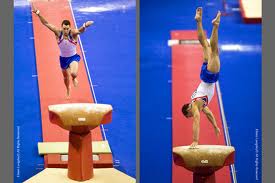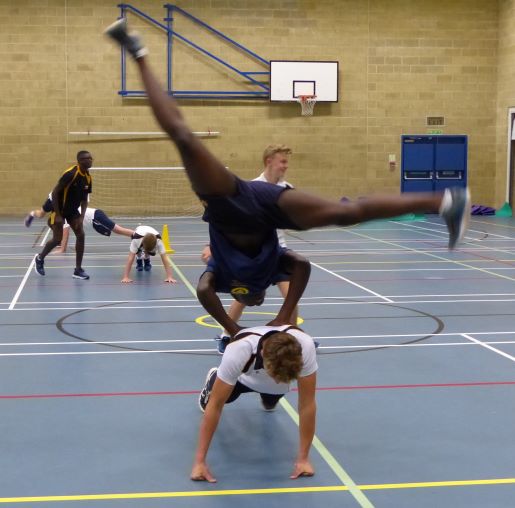Posts Tagged ‘gymnastics’
New Course for sports coaches
Gymnastics for sport Over the past 5 or so years, I have been running Movement workshops for sports coaches and p.e. teachers. The participants have enjoyed learning how to teach movement and basic gymnastics that they can then share with their players and pupils. Players who are stronger, more agile and more adaptable can pick…
Read MoreExcelsior ADC Newsletter
Excelsior AD Club newsletter March 2019 We have had so much happen in the last month, and exciting things happening in the run up to Easter, it is best to keep them all in one place. So here you go. 6 members complete their Athletic Development Coaching Course Archie, Daisy, Flora, Jakin, Rebecca and Stephanie…
Read MoreHistory of Educational Gymnastics in British schools
Educational Gymnastics in Britain A popular conception of gymnastics today is of young girls in sparkly leotards with hair kept up in tightly bound buns. This is a relatively new concept, with gymnastics originally being an all-male outdoor pursuit. Gymnastics has originated from several different sources, but all had the underlying principle of healthy movement.…
Read MoreExcelsior ADC Club Update December 2017
Merry Christmas to all our club members Thanks to all our athletes, parents, volunteers and suppliers for a great 2017. A lot has happened over the last year, and more is planned for 2018. Here is a summary and update for January 2018. Please share with family and friends, you never know who might want…
Read MoreExcelsior ADC Club Update September 2017
Autumn Term means new beginnings School term has resumed which means the end of Summer Athletics and the resumption of gymnastics and weightlifting in Willand and Wellington. Here is a brief synopsis of what is happening. Fundraising: we have been short listed from over 700 applicants for the Skipton Grassroots Giving Campaign. In order to…
Read MoreSpeed Training for Gymnasts
How to get to the Vault or Double Mini Trampoline quicker
 In order to generate a bigger jump, gymnasts need a faster approach to the Vault or Double Mini Trampoline (DMT).
In order to generate a bigger jump, gymnasts need a faster approach to the Vault or Double Mini Trampoline (DMT).
This involves them running for about 20-30m and then jumping onto a springboard or the DMT.
Read MoreExcelsior ADC awarded Sport England Grant
Excelsior ADC awarded £8756 from Sport England I am delighted to announce that we have been successful in our application to Sport England’s small grants programme. The money will be used to develop the Weightlifting section of our club. The grant we will be used in 3 main parts: Equipment: we shall be buying Eleiko…
Read MoreWhy disengaged girls hate school sport
I have recently been asked to help coach “disengaged” girls in school p.e. I am doing weightlifting at one school, gymnastics at another. Funding is available to help these girls as they are unenthusiastic about “traditional p.e.” My experience coaching them is different from what I was told to expect. What is “traditional p.e.”? I…
Read MoreHave you thought of using gymnastics as part of your warm up?
How can gymnastics help prepare me for a collision sport?
Gymnastics: a sport based on perfecting skills and techniques. What you practice at training is exactly what you will perform at competition.
Field sports: sports based on quick decision making, tactics and game play. No game or match is ever the same.
Read MoreDistrict 13- Parkour, Gymnastics
I watched the French film District 13 a couple of weeks ago. There is some truly impressive athletic movement in this film. The freestyle attitude of Parkour, making use of the local environment, looking at everyday objects in a different light, is in total contrast to some sports environments where free expression is constrained.
I wonder whether young children especially would be better off developing this type of movement and awareness, rather than being taken to a class and put through highly disciplined and structured movement patterns.




